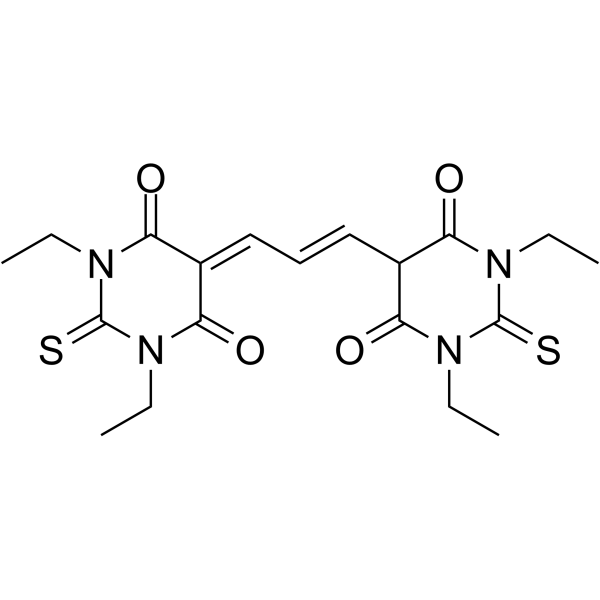Cyclic AMP-induced depolarization measured by bis-oxonol fluorescence in bovine adrenal medullary chromaffin cells.
N Minami, K Morita, T Suemitsu, T Miyasako, T Dohi
Index: J. Neural Transm. Gen. Sect. 97(1) , 65-72, (1994)
Full Text: HTML
Abstract
Effects of cyclic AMP on membrane potentials were examined by measuring the changes of bis-oxonol fluorescence in bovine adrenal medullary chromaffin cells. 8-Bromo cyclic AMP (8Br-cAMP) or forskolin caused a gradual and long lasting increase of the fluorescence intensity. The effects of 8br-cAMP was blocked by cyclic AMP-dependent protein kinase inhibitor, adenosine-3', 5'-cyclic monophosphothioate, Rp-diastereomer (Rp-cAMPS) and there was no further increase in the fluorescence by 8br-cAMP in the cells depolarized with 56 mM KC1 or gramicidin D. Ouabain or the removal of extracellular K+ ([K+]0 free) which block Na+, K+-ATPase also increased the fluorescence. The effect of 8br-cAMP on the fluorescence was counteracted by ouabain or [K+]0 free and was blocked in the absence of extracellular Na+ but not by tetrodotoxin or the removal of Ca2+ from the medium. These results may suggest that cyclic AMP causes the membrane depolarization by accumulating Na+ through the inhibition of Na+, K+-ATPase in adrenal chromaffin cells.
Related Compounds
| Structure | Name/CAS No. | Molecular Formula | Articles |
|---|---|---|---|
 |
Bis-(1,3-diethylthiobarbituric acid)trimethine oxonol
CAS:47623-98-3 |
C19H24N4O4S2 |
|
Membrane potential changes visualized in complete growth med...
1997-03-15 [Exp. Cell Res. 231(2) , 260-8, (1997)] |
|
Peroxynitrite affects Ca2+ influx through voltage-dependent ...
2001-01-01 [J. Neurochem. 76(2) , 341-50, (2001)] |
|
Simultaneous mechanical stiffness and electrical potential m...
2009-04-29 [Nanotechnology 20(17) , 175104, (2009)] |
|
A membrane potential-sensitive dye for vascular smooth muscl...
2003-01-31 [Biochem. Biophys. Res. Commun. 301(1) , 113-8, (2003)] |
|
Measurement of membrane potential of endothelial cells in si...
1995-09-01 [Microvasc. Res. 50(2) , 183-98, (1995)] |